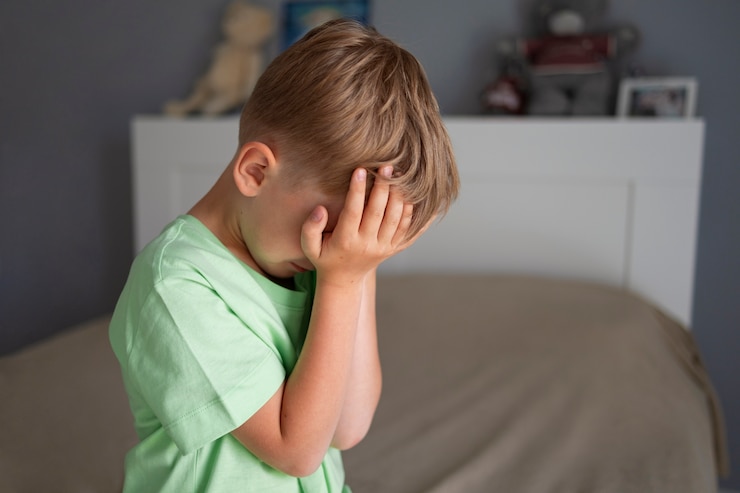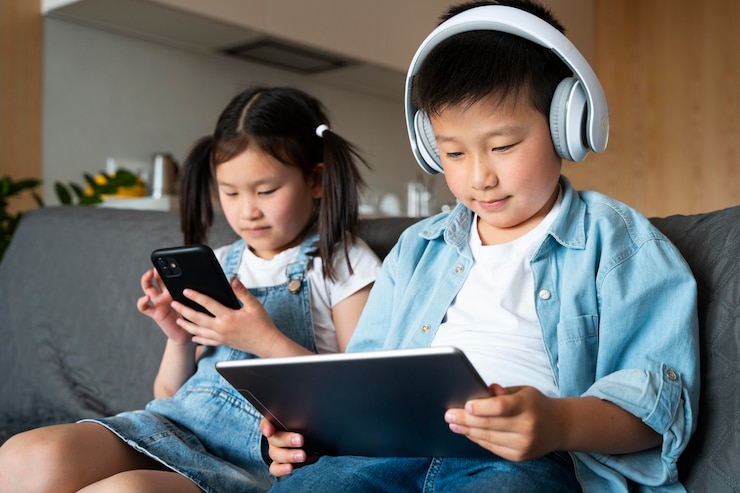
Children can start showing signs of anxiety at a young age. These signs might be obvious sometimes, while other times they can be more subtle or unexpected. Here are 10 anxiety symptoms in kids that might not be easy to recognize.
### Table of Contents
#### “Could my child really have anxiety?”
This is a common reaction from many parents when they visit my therapy office, trying to understand their child’s puzzling and difficult behaviors. Often, parents have tried to manage these behaviors with rewards and consequences, only to find that instead of improving, the behaviors often get worse.
It’s completely understandable why parents might miss anxiety symptoms in their children. We often picture an anxious child as a preschooler clinging to their mom on the first day of school. Parents are often surprised to learn that their child’s so-called ‘misbehaviors’ are actually ‘distressed behaviors’ due to how the nervous system reacts under stress. A child experiencing ‘fight or flight’ often seems like they’re simply not listening.
When our brain senses danger, whether real or imagined, our body reacts as if there’s an actual threat—this is anxiety. Our brain’s emotion center, the amygdala, seeks to protect us, but factors like genetics or environment can make it overactive, causing the brain to misinterpret what’s truly dangerous. When this happens often, your child might exhibit survival instincts.
### Recognizing Anxiety Symptoms
Parents are often puzzled by these anxiety-related behaviors, which arise from the fight-flight-freeze response. Here are some common examples:
1. **Emotional Reactivity**: It’s easy to be emotionally reactive when overwhelmed by anxiety. Similarly, a child’s overactive emotion center can result in irritability and heightened emotions.
2. **Excessive Questioning**: Posing questions repeatedly may provide comfort. A child might continually ask questions on a road trip, seeking predictability in uncertain times.
3. **Seeking Reassurance**: A child might frequently seek reassurance, which is symptomatic of anxiety and sometimes of Obsessive-Compulsive Disorder. This behavior results from anxious thoughts needing relief.
4. **Physical Symptoms**: Anxiety often manifests physically. For instance, a child might report a stomach ache because their digestive system slows to conserve energy for other survival needs.
5. **Avoidance**: Avoiding tasks, like chores or social situations, can appear oppositional but might be an anxiety-driven attempt to exert control in a situation where they feel out of control.
6. **Sleep Issues**: An increased state of alertness can lead to difficulty winding down at night, causing sleep disturbances.
7. **Cognitive Challenges**: Anxiety’s impact on the brain can make tasks needing focus or organization difficult. The emotional brain takes precedence over the thinking brain.
8. **Tearfulness**: Anxiety can result in emotional outbursts. Tears may flow unexpectedly, often triggered by minor challenges or transitions.
9. **Escape Behaviors**: A child seeking to physically flee from situations might simply be manifesting the ‘flight’ aspect of anxiety, aiming to escape overwhelming circumstances.
10. **Clinginess**: A child expressing reluctance to leave their caregiver might do so due to overwhelming anxiety about being on their own.
### Understanding the Neurological Roots of Anxiety
It’s crucial to see these behaviors not as deliberate choices but as signs of anxiety. Anxiety in children is common but treatable, negatively impacting their daily life across different environments.
Karen Young beautifully states, “Anxiety is the work of a strong, healthy brain that’s a little overprotective.”
### Additional Resources
If your child struggles with anxiety, explore Karen’s book “Hey Warrior,” which explains anxiety to kids in a reassuring way.
*This article was originally published on 10/18/2018 and has been updated.*
### Join Our Community
Join over 30,000 parents who subscribe to the Parents with Confidence newsletter and receive a free 5-day parenting course. Learn how to:
– Protect your child’s self-esteem
– Gain your child’s cooperation
– Foster valuable life skills
– Discipline without causing emotional harm
We promise not to spam you. Unsubscribe anytime. Built with Kit.



